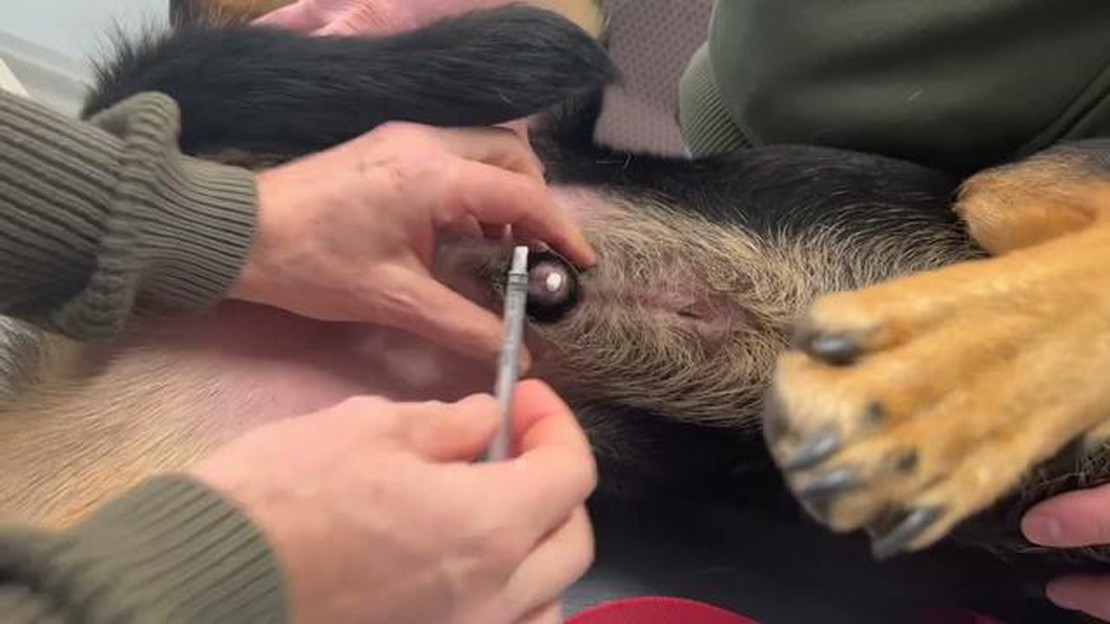Are Belgian Malinois the Best Hunting Dogs? Discover the Skills and Characteristics
Are Belgian Malinois Good Hunting Dogs When it comes to hunting dogs, there are many breeds to choose from. One breed that stands out among the rest …
Read Article
Is your furry friend suffering from esmegma? Don’t worry, we have all the information you need to understand this condition and how to treat it.
Causes of Esmegma:
Esmegma in dogs can be caused by various factors such as poor hygiene, excessive moisture in the genital area, and hormonal imbalances. It is important to identify and address the underlying cause to effectively treat the condition.
Symptoms of Esmegma:
Common symptoms of esmegma in dogs include smelly discharge from the genital area, inflammation, redness, and discomfort during urination. If you notice any of these signs, it is crucial to seek veterinary attention.
Treatment Options:
There are several treatment options available for esmegma in dogs. Your veterinarian may recommend cleaning the affected area with a gentle antiseptic solution and applying a prescribed ointment or cream to alleviate symptoms. In severe cases, surgical intervention may be necessary.
If you suspect your dog may be suffering from esmegma, it is important to consult with a qualified veterinarian for an accurate diagnosis and appropriate treatment plan. Don’t wait, visit YourSite.com today to learn more about esmegma in dogs and how to provide the best care for your beloved pet.
Esmegma in dogs is a common condition that can affect both male and female dogs. It is a buildup of smegma, a waxy substance that can accumulate around the genital area of dogs.
Causes:
Symptoms:
Treatment:
If you suspect that your dog has esmegma, it is important to consult with a veterinarian for a proper diagnosis and treatment plan. Treatment may include:
Preventing esmegma in dogs is possible by practicing good hygiene, including regular cleaning of the genital area and keeping the area dry. It is also important to address any underlying health issues that may contribute to the development of esmegma.
Read Also: Is It Legal to Ride in the Bed of a Truck in Florida?
| Advantages | Disadvantages |
|---|---|
| * Relieves discomfort |
If you notice any symptoms of esmegma in your dog, it is important to seek veterinary care promptly to ensure proper diagnosis and treatment. Remember, good hygiene and regular veterinary check-ups can help prevent esmegma and promote your dog’s overall health.
Read Also: Can a Dog Have 2 Microchips? 5 Things You Need to Know
Esmegma in dogs can be caused by various factors. Understanding the underlying causes can help in preventing and managing this condition effectively. The common causes of esmegma in dogs include:
It is essential to consult a veterinarian for proper diagnosis and treatment of esmegma in dogs. The veterinarian can determine the underlying cause and recommend appropriate treatment options to address the condition effectively.
Esmegma is a condition that can affect both male and female dogs. It is important to be aware of the symptoms so that you can identify it early and seek proper treatment. Common symptoms of esmegma in dogs may include:
If you notice any of these symptoms in your dog, it is important to consult with a veterinarian for an accurate diagnosis and appropriate treatment. Remember, early detection and treatment can help prevent complications and promote your dog’s overall health and well-being.
When it comes to treating esmegma in dogs, there are several options available. The treatment plan will depend on the severity of the condition and the underlying cause. Here are some common treatment options:
Your veterinarian will assess your dog’s specific situation and recommend the most appropriate treatment plan. It’s important to follow their guidance and attend any follow-up appointments to ensure the health and well-being of your furry friend.
Esmegma is a common condition in dogs that can lead to discomfort and potential health issues if not properly managed. Here are some tips to help prevent esmegma in your dog:
By following these prevention tips, you can help reduce the risk of esmegma in your dog and keep them comfortable and healthy.
Esmegma in dogs can be caused by a build-up of dead skin cells, oil, and bacteria in the genitals and surrounding area.
The symptoms of esmegma in dogs can include redness, swelling, discharge, odor, and discomfort in the genital area.
Esmegma in dogs is usually treated by cleaning the genital area with a veterinarian-recommended cleanser and applying a topical ointment or medicated cream.
Esmegma in dogs can be prevented by regularly cleaning the genital area, keeping the area dry, and avoiding exposure to irritants or allergens.
Esmegma in dogs is not usually a serious condition, but it can cause discomfort and should be treated to prevent any complications or infections.
Are Belgian Malinois Good Hunting Dogs When it comes to hunting dogs, there are many breeds to choose from. One breed that stands out among the rest …
Read ArticleMale Vs Female Bernese Mountain Dog The Bernese Mountain Dog is a large and lovable breed known for its gentle and affectionate nature. Whether you …
Read ArticleIs Windex Toxic To Dogs As pet owners, we always want to make sure that our furry friends are safe and healthy. Unfortunately, accidents can happen, …
Read ArticleDogs Eat Raw Meat Feeding dogs a raw meat diet has gained popularity among many pet owners who believe it is a more natural and healthy way to nourish …
Read ArticleCan Diabetic Dogs Eat Carrots If you have a diabetic dog, you know how important it is to carefully manage their diet. While it’s crucial to monitor …
Read Article9 Week Old Pitbull Puppy Are you the proud owner of a 9-week-old Pitbull puppy? Congratulations! This is an incredibly exciting time as you welcome a …
Read Article